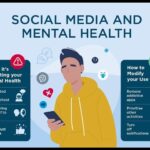Introduction
Weight loss has always been one of the most common health goals, but in 2025, people are shifting away from “quick fixes” and crash diets. Instead, more focus is being placed on a balanced, sustainable diet that not only helps shed extra weight but also supports long-term health.
This guide will explain what a balanced diet really means, how it supports weight loss, which foods to include, what to avoid, and how to create a practical meal plan that works in everyday life.
What is a Balanced Diet?
A balanced diet provides the body with the right proportions of macronutrients (carbohydrates, proteins, and fats) along with micronutrients (vitamins and minerals) needed for overall health.
For weight loss, the goal is not to starve yourself, but to give your body nutrient-dense foods that provide energy while keeping calories in check.
Why Balance is Key for Weight Loss
Crash diets may cause fast weight loss, but they usually slow down metabolism, cause nutrient deficiencies, and often lead to weight regain. A balanced diet, on the other hand:
-
Maintains steady blood sugar levels.
-
Keeps you fuller for longer.
-
Preserves lean muscle mass.
-
Provides consistent energy.
-
Prevents cravings and overeating.
Macronutrient Breakdown for Weight Loss
1. Protein (30–35% of calories)
Protein is the most important nutrient for weight loss. It boosts metabolism, reduces appetite, and prevents muscle loss while losing fat.
-
Best sources: Chicken, turkey, fish, eggs, Greek yogurt, tofu, lentils, chickpeas, beans.
2. Carbohydrates (40–45% of calories)
Carbs are not the enemy! Choosing the right type of carbs ensures steady energy and prevents blood sugar spikes.
-
Best sources: Oats, quinoa, brown rice, whole wheat bread, sweet potatoes, fruits, and vegetables.
3. Healthy Fats (20–25% of calories)
Healthy fats keep you full, improve brain function, and support hormone balance.
-
Best sources: Avocados, nuts, seeds, olive oil, coconut oil, fatty fish like salmon.
Micronutrients That Support Weight Loss
Apart from macros, certain vitamins and minerals play a role in metabolism and appetite control:
-
Vitamin D: Regulates hormones and energy levels.
-
Magnesium: Reduces stress-related cravings.
-
Iron: Prevents fatigue during workouts.
-
B Vitamins: Support metabolism and energy production.
Foods to Include in a Balanced Weight Loss Diet
✅ Whole grains – oats, quinoa, brown rice
✅ Lean protein – eggs, chicken, fish, lentils, beans
✅ Healthy fats – nuts, seeds, avocado, olive oil
✅ Fiber-rich foods – leafy greens, broccoli, carrots, apples, chia seeds
✅ Hydrating foods – cucumbers, watermelon, citrus fruits
Foods to Avoid (or Limit)
❌ Processed foods – chips, cookies, instant noodles
❌ Refined carbs – white bread, pastries, sugary cereals
❌ Sugary drinks – sodas, packaged juices, energy drinks
❌ Excessive alcohol – adds empty calories and disrupts metabolism
❌ Deep-fried foods – high in unhealthy fats
Portion Control and Meal Timing
Even healthy foods can lead to weight gain if eaten in large portions. Use these strategies:
-
The Plate Method: Half plate vegetables, one-quarter protein, one-quarter whole grains.
-
Mindful eating: Eat slowly and stop when 80% full.
-
Meal timing: 3 balanced meals + 1–2 healthy snacks to avoid overeating.
Sample One-Day Balanced Diet Plan
Breakfast:
-
Oatmeal with chia seeds, blueberries, and almonds.
-
Green tea.
Mid-Morning Snack:
-
Greek yogurt with walnuts.
Lunch:
-
Grilled chicken breast or chickpea salad.
-
Steamed vegetables.
-
Brown rice or quinoa.
Evening Snack:
-
Apple slices with peanut butter.
Dinner:
-
Baked salmon or tofu stir-fry.
-
Roasted vegetables.
-
Small portion of sweet potato.
Before Bed:
-
Chamomile tea for relaxation.
Common Mistakes to Avoid
⚠️ Skipping meals (slows metabolism).
⚠️ Over-restricting carbs (causes fatigue and cravings).
⚠️ Eating “low-fat” processed foods (often full of sugar).
⚠️ Not drinking enough water (dehydration slows fat loss).
⚠️ Comparing your journey with others (everyone’s body is different).
Lifestyle Habits That Support Weight Loss
-
Stay active: Aim for at least 7,000–10,000 steps a day.
-
Get enough sleep: Poor sleep increases hunger hormones.
-
Manage stress: Chronic stress raises cortisol, which promotes belly fat.
-
Track progress: Keep a food journal or use an app to monitor calories.
Final Thoughts
A balanced diet for weight loss is not about deprivation—it’s about eating smarter. By focusing on whole, nutrient-dense foods, managing portions, and avoiding highly processed options, you can lose weight naturally while staying energized and healthy.
In 2025, the trend is clear: sustainable, balanced nutrition is the true key to long-term weight loss success.






Leave a Reply